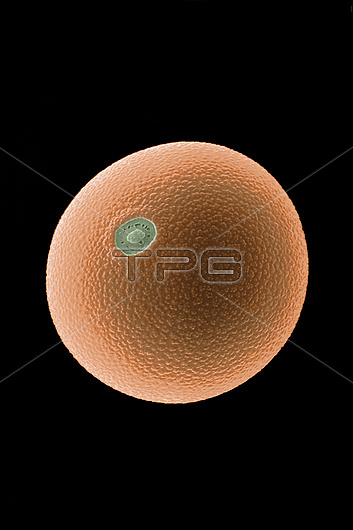
A scanning electron micrograph of a pollen grain of Dactylis glomerata, also known as cocksfoot or orchard grass. The picture shows a single pollen grain, 35 microns in diameter, and the germination pore within the pollen wall (pale green. The pore is the site of outgrowth of the pollen tube that conveys the male gametes (sperm) to the female ovary following pollination. It is also the site of allergens that induce hay-fever. Cocksfoot is grown as a forage crop and for hay. It displays high genetic diversity, so is adaptable to a range of habitats. In a field experiment, heavily grazed plants transplanted to an ungrazed pasture did not grow to their usual height, but retained their short stature. This is an example of genetic change brought about by the environment - so-called epigenetics. Normally a tall wind-pollinated grass, D. glomerata is a major cause of allergic rhinitis
| px | px | dpi | = | cm | x | cm | = | MB |
Details
Creative#:
TOP26580579
Source:
達志影像
Authorization Type:
RM
Release Information:
須由TPG 完整授權
Model Release:
N/A
Property Release:
N/A
Right to Privacy:
No
Same folder images:

 Loading
Loading